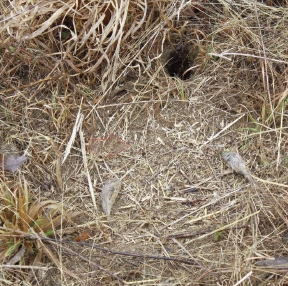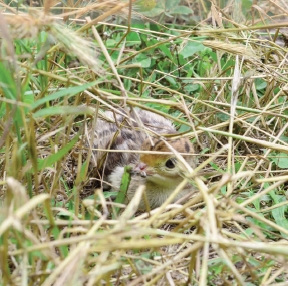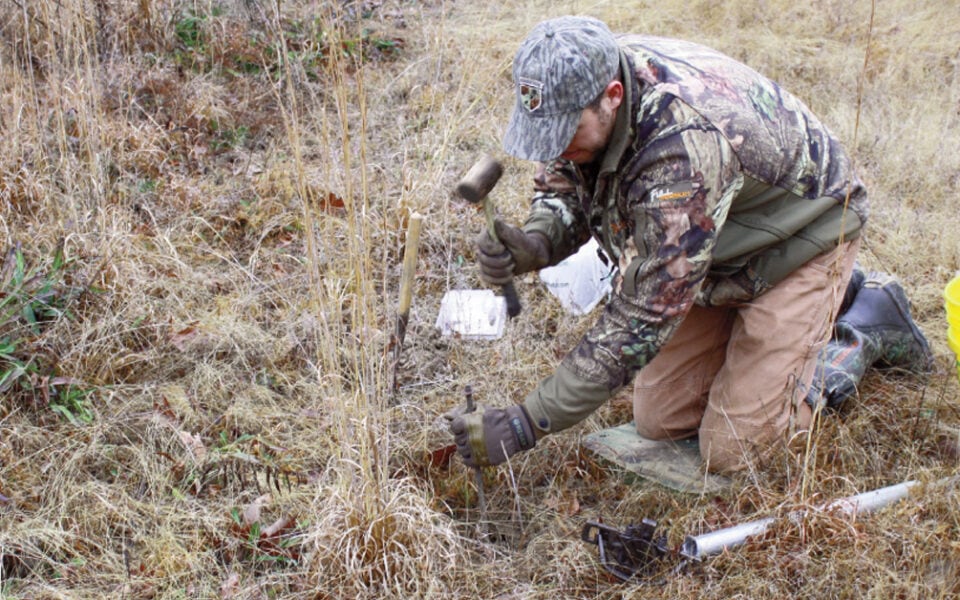Making Sets & Setting Traps
Trapping is somewhat of a dying art, there may not be as many people into it as there has been in the past. Most of the lack of participation can likely be attributed to busy schedules, lack of know-how and dropping fur prices. I have always really enjoyed trapping and found a lot of satisfaction in trying to “outfox” predators and other critters.
Most successful trappers will tell you they don’t hold a book of secrets on how to catch critters on a consistent basis. What you will find with almost every good trapper; however, is a strong work ethic, very competitive spirit, knowledge to adapt to diverse situations and great attention to detail.
Small predators and pests are a great place to start when it comes to learning the basics of trapping. Just about every stretch of woods, thickets or prairie lands, whether in the middle of an urban environment or very rural locations, hold some population of raccoons, possums, skunks, armadillos, fox, beavers and the list goes on. Most of these species are very adaptable and have thrived amongst human intrusion and urban sprawl. I have noticed in some areas the population density of these smaller predators may be even higher the closer you get to increased human population because of a lower number of larger predators. The larger predators are typically more wary and would rather be in more rural areas. This doesn’t hold true everywhere, but I have trapped several urban woodlots and thickets that are over abundant with coons, possums, beavers, etc. So as long as its legal and you have permission, there are numerous trapping opportunities without having vast expanses of woods or fields.
Trapping with Live Traps
 Nest predator trapping can be very rewarding to the novice trapper and veterans as well. There are many trapping methods that can be successfully implemented in nest predator removal. Using live traps is one of the easiest and least complicated methods for catching nest predators such as possums, skunks, coons, and armadillos. These live traps or “cage traps” as some call them can be placed in any travel routes along creeks, edges of ponds, around wildlife feeders, and numerous other areas where they are sure to roam.
Nest predator trapping can be very rewarding to the novice trapper and veterans as well. There are many trapping methods that can be successfully implemented in nest predator removal. Using live traps is one of the easiest and least complicated methods for catching nest predators such as possums, skunks, coons, and armadillos. These live traps or “cage traps” as some call them can be placed in any travel routes along creeks, edges of ponds, around wildlife feeders, and numerous other areas where they are sure to roam.
Talk to ten trappers and you will probably get ten different answers on what the best bait is. I have seen everything used from cat food, honey buns, sardines, and marshmallows, and most of them work well. There are numerous commercial baits available that also work great for these smaller critters. The commercial baits offer a little more bang for your buck in that many of them have gland scents in addition to attractive food scents. Most are very strong and can be smelled from great distances to improve trapping success.
Most live or cage traps are built very similar with both, 1 or 2 door configurations, and some form of a pan or plate that trips the door to shut when stepped on or pressed by the critter. Although many nest predators can be caught with the trap just left sitting in the wide open, some care can be taken to cover the trap with some material from its surroundings like dead grass and small sticks to conceal the sight of the wire cage. This also conceals your set-up from passing people. A small earth stake or even a heavy rock can be used to keep the trap from being rolled and moved once the pest is caught inside.
Dog Proof Traps
Another popular and very effective method for raccoon trapping is called a dog proof trap. There are many variations and brands of dog proof traps available and most use a push-pull style trigger that works great for coons as well as incidentals like possums and feral cats. These push-pull style dog-proofs are great to use in urban environments where you have a higher probability of catching a family cat, they can then be released with no harm done.
Trappers that are primarily targeting coons, or want to decrease incidentals catches, will usually use the “pull only” type trigger dog-proof traps. These are great for raccoons because they are one of few animals that have small and dexterous hands that can reach in, grab and pull the bait to trigger the trap. Dog-proof traps are probably the most economical way to get a lot of traps out on a piece of property. They can be set and baited quickly and then anchored with a cable stake -and then on to the next one.
Leg-hold sets have been used with great success for many years on raccoons and other nest predators. As with anything, it pays to have these sets where the critters already want to be. Creek banks, log crossings, travel corridors in thickets, and pond edges are all places to expect good results. Looking for tracks and sign just like you would when big game hunting can help you put your sets in the spots with the heaviest activity. #1 size traps are sufficient in all brands for catching and holding most all nest predators.
Coyote trapping has received a lot of attention the last few years for several reasons. Although many states have areas where the deer population has exceeded the carrying capacity, there are also many isolated areas where the deer population has been on a steady decline for several years. Studies done in some of these areas show significant fawn mortality directly attributed to coyotes. This can have a major impact on fawn recruitment and survival, especially if combined with a year or two of bad weather, disease or loss of good fawning habitat which in turn starts a downward trend in overall deer density. This has led to many people getting interested in trapping coyotes as a means to bring back their deer herd or prevent it from regressing further.
Snaring
Snaring has always been a popular way of catching critters. When using them for coyotes, you should do a lot of scouting to find the areas where you have the highest chance of a catch. These areas can be ditch crossings, trails in high grass or thickets, digs under fences and pinch points.
Snaring can be advantageous over leg-holds in areas where access by ATV or truck is very limited, you can carry a lot of snare set-ups without toting a lot of weight. I have personally had a lot of success snaring around fences where coyotes have a gap they consistently pass through. I have also caught a lot of coyotes where they dig under long fence lines, this can be especially effective on enclosures that have a large amount of property that coyotes want to hunt and use. These are also areas where you have a very low percentage chance of catching other incidental animals so they are very coyote specific.
A 3/32 size cable with a swivel and cam-lock closure is my favorite type of snare and seven foot lengths are ideal for most situations. Earth anchors are a great way to stake snares when snaring on trails, fence posts and strong saplings also work when available. Ideally snares should be boiled and dyed before using to get the bright shine off the cable and to reduce some odors.
When it comes to using leg-hold coil spring traps for coyotes and bobcats, there are about as many opinions and techniques as stars in the sky. It’s kind of a “trapper’s pride” thing that leads us to believe that whatever we did to catch one of these wary predators should be the “gold standard” everyone should go by. When talking predator trapping with others, my advice is to stick to what works for you until it quits working and then adjust.
Give the coyote his due, they are very wary, cunning, instinctual, and adaptable to most any environment and situation, but many people think they are too smart and not catchable. Truth is they are very catchable and you just have to learn how to consistently make sets that coyotes can’t resist. I asked good friend and fellow trapper Casey Shoop-man, of C2 Predator Removal, what advice he would give people who want to begin trapping. Shoopman says, “Keep sets simple and don’t get caught up in some fancy idea for a new set someone has come up with. Stick with dirt holes and flat sets and stay consistent in your process.”
Dirt Hole Sets
 The dirt hole set may well be the most popular and effective set for consistently catching fur. I will explain here in some detail, the following takes into account you already have your proper supplies and some general trapping knowledge. In its simplest form, a dirt hole set is nothing more than a hole in the ground that smells like it has a buried treasure in it. Coyotes are thieves and I try to create my dirt hole set as if another coyote killed something and tried to bury the remains or create a cache. My ideal dirt hole uses 3 different main scents, bait, a lure and some urine.
The dirt hole set may well be the most popular and effective set for consistently catching fur. I will explain here in some detail, the following takes into account you already have your proper supplies and some general trapping knowledge. In its simplest form, a dirt hole set is nothing more than a hole in the ground that smells like it has a buried treasure in it. Coyotes are thieves and I try to create my dirt hole set as if another coyote killed something and tried to bury the remains or create a cache. My ideal dirt hole uses 3 different main scents, bait, a lure and some urine.
After finding an area, I look for likely places to catch traveling coyotes, like trail intersections, ditch crossing in fields or gaps in fences – I look for something that has a good backing like a clump of grass that sticks out or piece of rot-ten log, really anything that will encourage the coyote to work the set from the front where your trap will be bedded. Once I have my backing, I dig my trap bed about 8 inches in front of my backing. Your trap should be bedded as solid as possible and not have any rocking or wobbling motion to either side of the hinges or jaws.
Once your trap is properly bedded and covered, you can put in your dirt hole. I like to use a piece of pipe or an auger to make a good round dirt hole. Wait to make this your last step to cut down on the chance of getting any smell of bait or lure on the trap itself. All of the bait scent should come directly from the hole. I usually dig mine in about 2 inches to the right and 6-8 inches from my trap pan which should put it just in front of and to the right or left of center of your backing. So looking at it, you should have your trap bedded, then your dirt hole, then your backing. I like to use sheep’s wool to put my bait on and I push it to the bottom of the 8-10 inch deep hole with a small stick and then leave the stick too.
After my bait is in the dirt hole I take a small stick and apply a pea sized drop of lure on the upper lip of the hole. Now that the hole is baited and lured you can apply a little coyote or fox urine on the backing. Those are the basics of a dirt hole set, there are variations and every trapper has their personal nuances, but a properly made dirt hole with good trap preparation is hard to beat.
 One more very effective set for coyotes and bobcats is the flat set. This is constructed similarly to the dirt hole minus the hole with bait. Flat sets can be made with a wide variation of eye catchers or attention grabbers used as your backing, like a piece of bone, dead wood, or even a rock. Flat sets can be utilized when rain is expected which can ruin a dirt hole set by filling it with water.
One more very effective set for coyotes and bobcats is the flat set. This is constructed similarly to the dirt hole minus the hole with bait. Flat sets can be made with a wide variation of eye catchers or attention grabbers used as your backing, like a piece of bone, dead wood, or even a rock. Flat sets can be utilized when rain is expected which can ruin a dirt hole set by filling it with water.
I like to utilize flat sets when there is a lot of open ground like a food plot or clearing in the woods. I have caught coyotes on nothing more than a piece of bone or large rock out in the middle of the field with the proper lure applied. These same sets can be very effective for bobcats as well as coyotes and foxes. Obviously with bobcats you want to use some lure and bait formulated for cats if you are targeting them specifically.
Bobcats really use their eyes and sometimes very flashy sets that might be a little much for coyotes are perfect for cats. Bird feathers and other things can be hung head high, close to the set for a visual attractant for cats.
As with all outdoor activities, make sure to check your local game laws and regulations on trapping. Every state has different requirements for trapping such as dates, trap sizes, snare sizes and bag limits to name a few.
Join our weekly newsletter or subscribe to GameKeepers Magazine.
Your source for information, equipment, know-how, deals and discounts to help you get the most from every hard-earned moment in the field.









